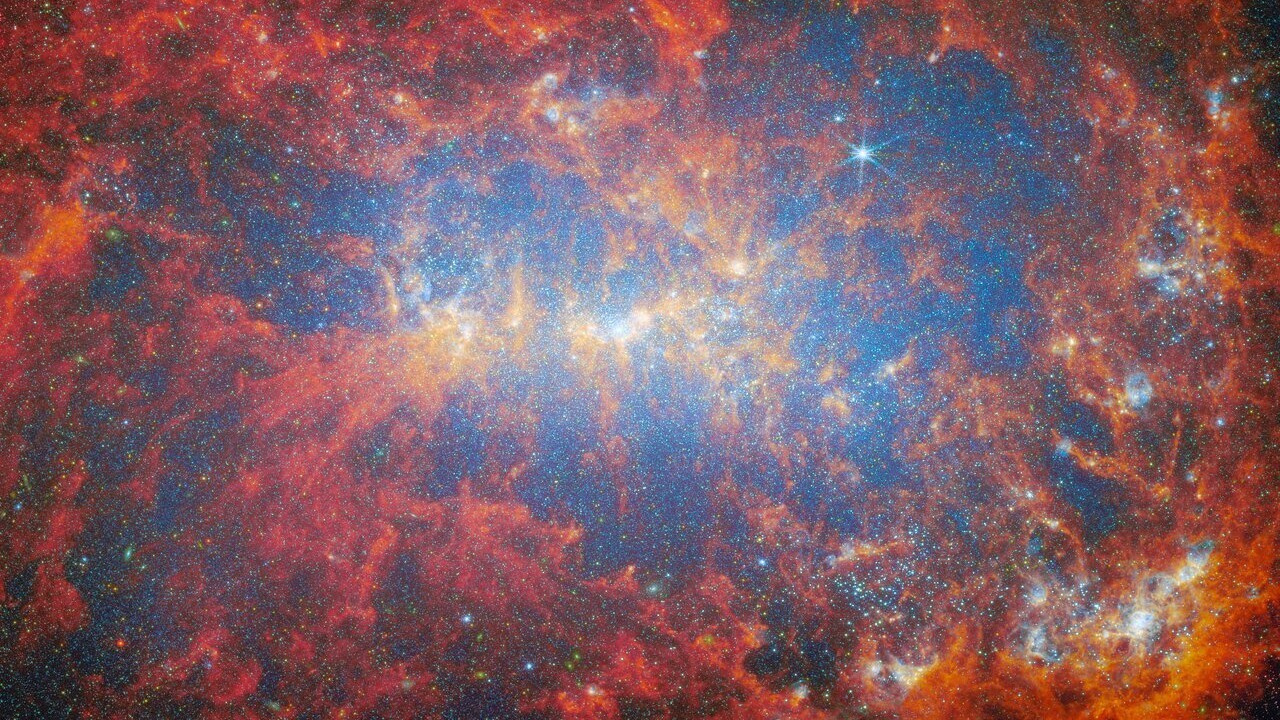
What it is: The dwarf galaxy NGC 4449, also called Caldwell 21
Where it is: 12.5 million light-years away, in the constellation Canes Venatici (the "hunting dogs")
When it was shared: May 29, 2024
Why it's so special: Galaxies across the universe tend to sire newborn stars at a predictable rate, but every once in a while, astronomers come across a "starburst galaxy" that defies all expectations. This new image from the James Webb Space Telescope shows the dwarf galaxy NGC 4449, which appears to be intensely fusing new stars at a much higher rate than expected.
In the center of the image is a diffuse blue region — a mess of glowing points that are brightest around the galaxy's core. These are older stars. Tendrils of gas and dust are visible, too. Yellow- and orange-tinted in the core, this is where new stars are forming. On the outskirts of the galaxy, these tendrils are mostly dark red, and they're rich in hydrogen. In the bottom left of the image are compact, light-blue regions — clusters of young stars — within the red, ionized gas.
Related: James Webb telescope discovers earliest galaxy in the known universe — and its shockingly big
Why NGC 4449 is so productive is unknown. Its efficiency resembles that of the first big galaxies, which are thought to have grown by merging with smaller galaxies. NGC 4449 has been nursing young stars for several billion years. It's unknown how long its current output will keep going, but astronomers calculate that there's enough gas to fuel new stars for another billion years.
Another conundrum is that, unlike most starburst galaxies, which usually produce stars primarily in their central regions, NGC 4449 has newborn stars both in its core and in the streams around it.
NGC 4449 is part of the M94 galaxy group, which is close to the Local Group that hosts the Milky Way. This relative proximity makes it an ideal target for JWST to study in exquisite detail.
This image, also available as a zoomable version, combines data from JWST's Mid-Infrared Instrument and Near Infrared Camera. It was observed as part of a project called Feedback in Emerging Extragalactic Star Clusters, for which JWST imaged the galaxies M51 and M83 last year.







